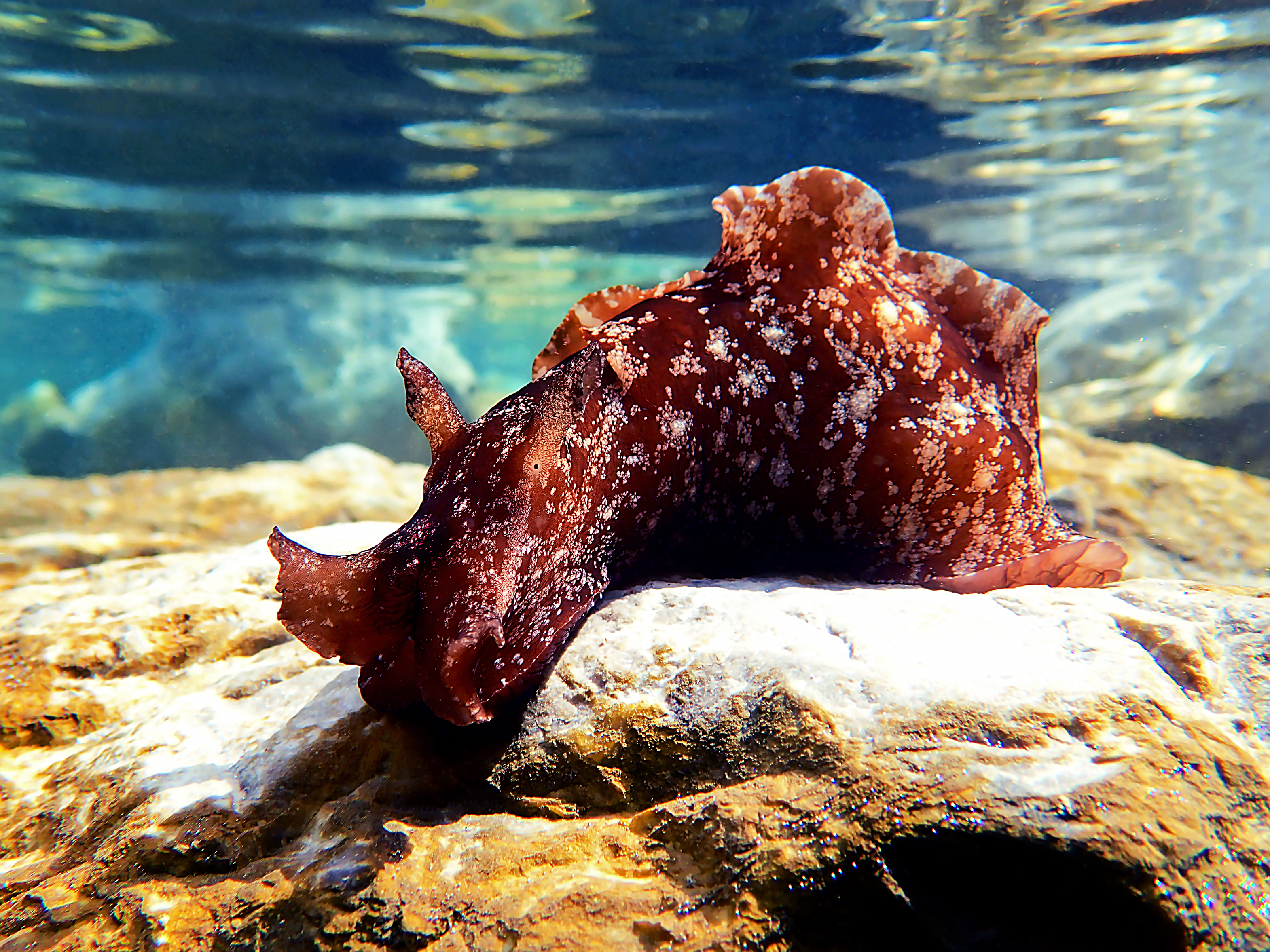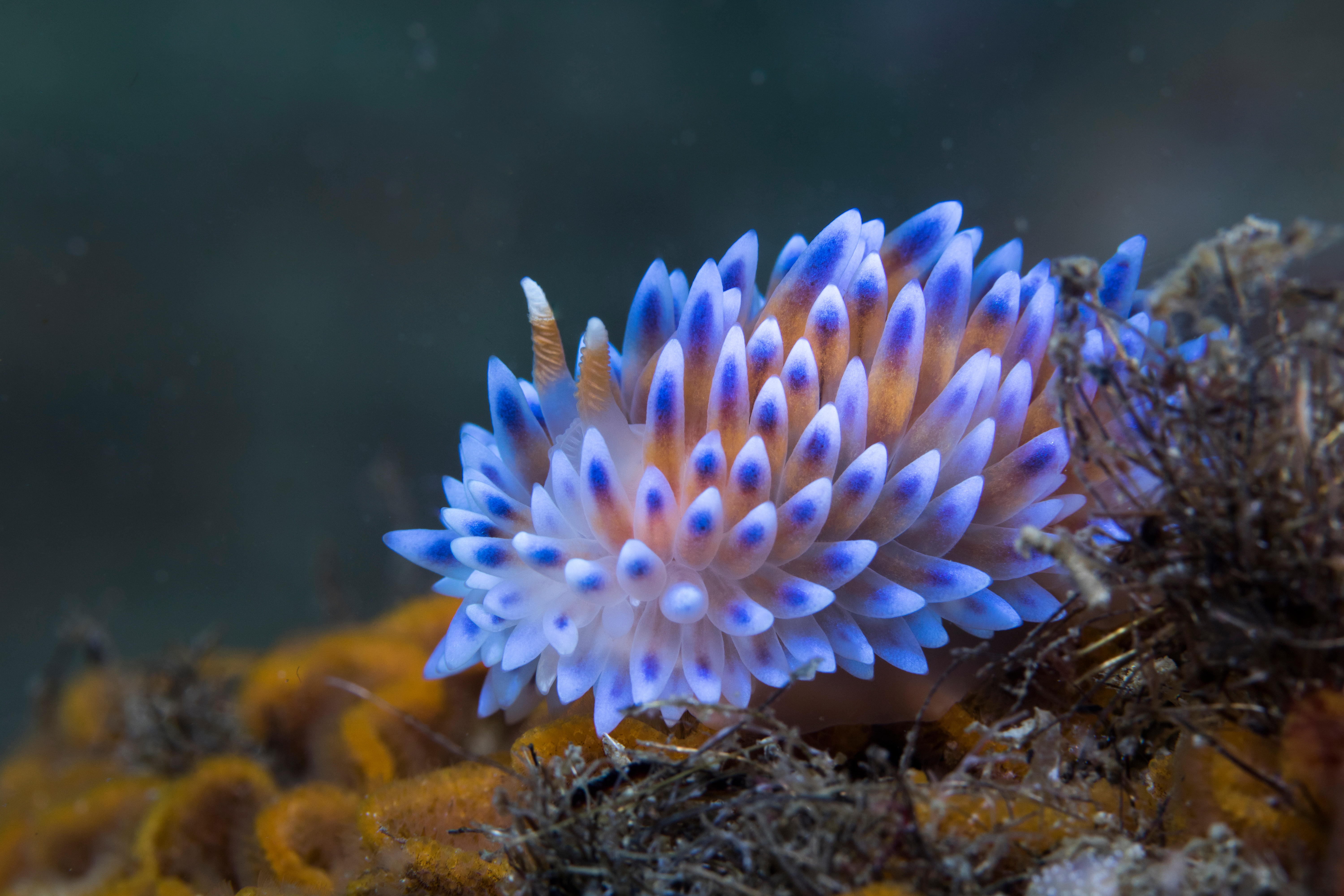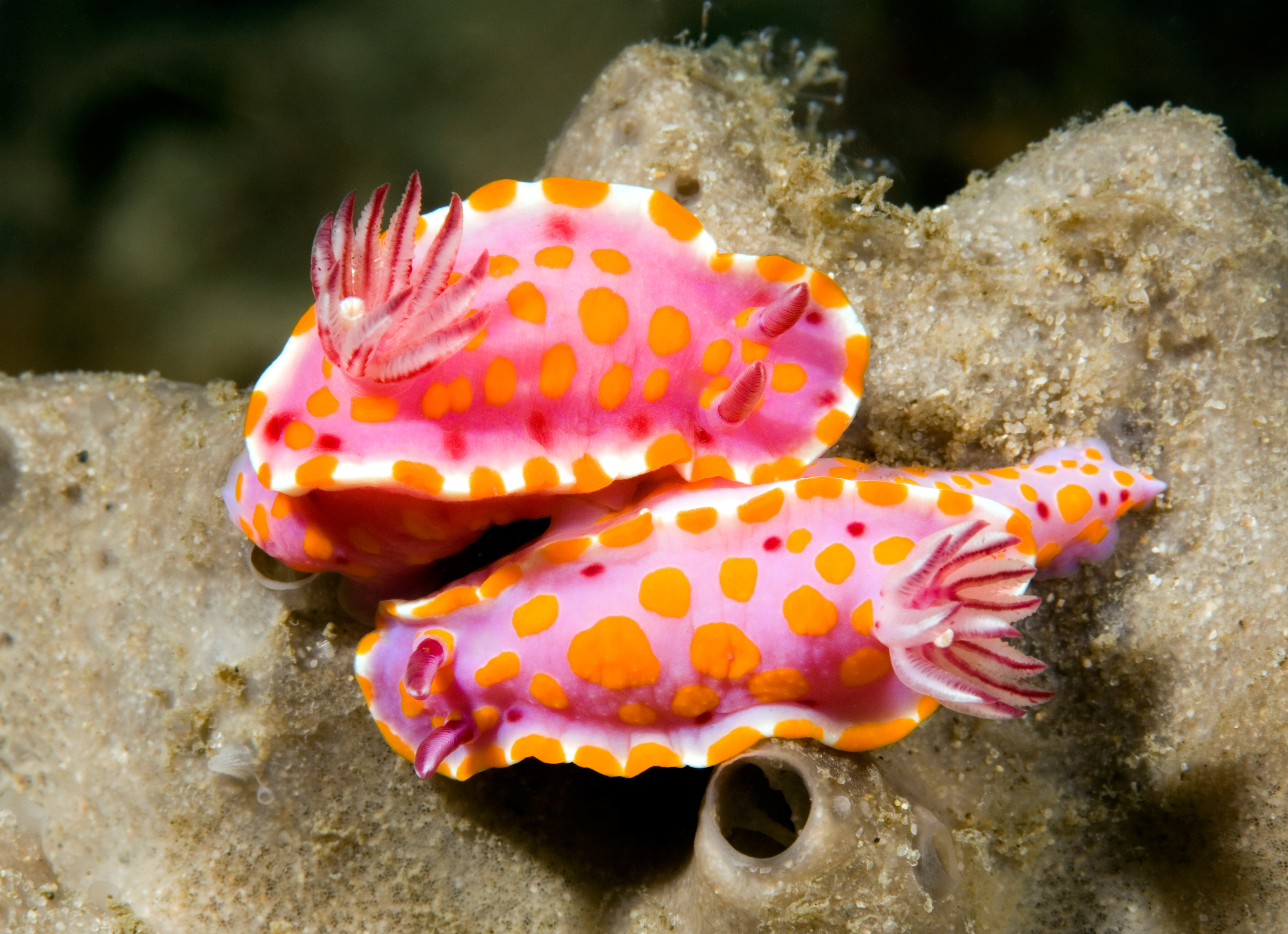Sea slug is an ocean snail with little or no shell as an adult. There are several thousand species (kinds) of sea slugs. The most diverse group of sea slugs are the nudibranchs. People sometimes use the name sea slug to refer to sea cucumbers. But sea cucumbers are a separate group of animals related to sea urchins and starfish.
Loading the player...
Sea slug


A sea slug typically has a tubelike body, with tentacles (feelers) on the head and often a gill or other organs on the back. Most sea slugs are small, measuring less than 1 inch (2.5 centimeters) long. However, many kinds grow much larger. One group of sea slugs, called sea hares, has several such species, including one that can reach more than 2 feet (60 centimeters) in length. Many sea slugs have bright colors, probably to warn predators (hunting animals) that the sea slug is poisonous or distasteful. Others are camouflaged to blend in with their surroundings.
Sea slugs live around the world, in all parts of the ocean. Some of them live in shallow tide pools. Other sea slugs live at depths as great as 13,000 feet (4,000 meters). A handful of species live in rivers or streams. The highest number of sea slug species are found in tropical oceans, especially in the southwestern Pacific Ocean. Some species live in cold seas, including those around the Arctic and Antarctica.
Most sea slugs spend the majority of their lives on the ocean floor. They move along the bottom using a muscular organ called a foot. Some species float or swim in open water.
Most sea slugs feed on only one type of food. Sea slugs may eat algae, corals, sponges, or other ocean animals, including other sea slugs. Most sea slugs eat using a tooth-bearing organ called a radula.
Most sea slugs are hermaphrodites—that is, each individual has both male and female reproductive organs. Many species mate in pairs, with each animal fertilizing the other. Sea slugs lay masses of eggs that contain only a few eggs in some species to thousands in others. 
